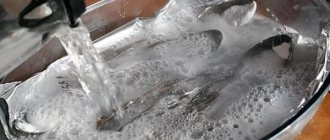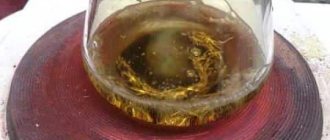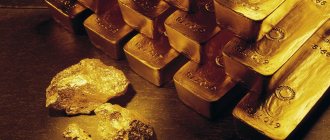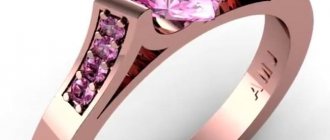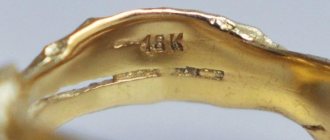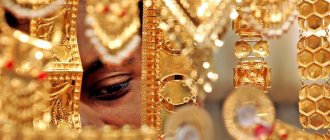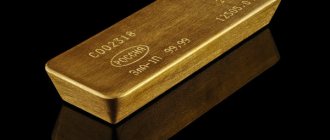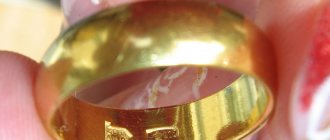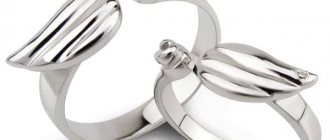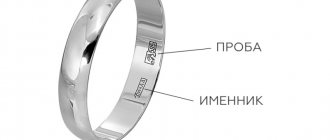Every jeweler, beginner or experienced, has a question in his head: how to melt gold at home. This is not as simple as it seems, because there are many pitfalls and nuances that should be taken into account by an individual who wants to engage in the business in question. For example, the metal should not be brittle and porous, as it turns out due to the action of oxygen on gold.
Let's figure out how to melt gold correctly. The question of how much remelting costs will also be raised.
What is needed for smelting
To melt this noble metal, you need the following:
- Crucible. Pure gold melts at temperatures exceeding 1000 degrees Celsius. Not everyone has a working container - a crucible - that can cope with such heat. But it can be replaced with raw potatoes. It is necessary to cut a hole in the tuber and put gold there. A container of natural origin will cope perfectly with melting.
- Forceps. Heat-resistant tongs are an essential tool when melting gold. They will have to touch the crucible frequently.
- A mixture of sodium carbonate and borax. It is used to make flux, which is added to gold before the smelting process. It takes two pinches of flux to clean every ounce of gold. The dirtier the noble metal, the greater the amount of this substance required for cleaning. Flux can also be made from baking soda and bicarbonate. When adding a substance, the contact between gold particles improves, and all impurities are better removed from the metal when it is heated.
- Oven or microwave. There is an option to purchase an electric furnace to melt metals or use a microwave. The latter must have a power of more than 1000 W, with a magnetron located on the side or behind the equipment.
There are furnaces sold at inexpensive prices that are specially made for melting metals. Such a device is designed for mixing several minerals at once, for example, gold, silver, aluminum, copper.
Attention! The microwave in which the precious metal was melted can no longer be used for domestic purposes. That is, heating and defrosting food.
If there is no oven or microwave, you must use a gas burner.
When do alloys melt?
Gold is characterized by durability, malleability, electrical conductivity, viscosity, and low resistance. It is thanks to these parameters that it has found wide application not only in the jewelry industry, but also in medicine, industry, and pharmaceuticals.
In its pure form, nothing can be made from gold in its natural state.
In order to make jewelry, this metal is not only melted, but also mixed with other precious and non-precious metals, such as silver. And gold can only be mixed with another element in a molten state. Therefore, it is pre-melted in special laboratories using certain tools and equipment.
Scrap melting (process)
You need to be prepared for the fact that there will be a lot of impurities in scrap gold. Sometimes their amount in the metal reaches 25%. Such scrap is not suitable for figure casting, but you can work with it using the printing method (that is, heat and stretch).
- First, you need to sort the scrap by color. The more copper it contains, the redder its hue.
- To speed up the melting process, it is recommended to divide the scrap into small pieces.
- Next, you need to carefully sprinkle flux inside the crucible and put the precious metal there. You need to start with larger items (if you need to melt a lot of things), and add smaller ones as the process progresses.
- So, when the gold objects are laid out in the crucible, the latter is placed inside the furnace and wait until the gold becomes completely molten.
- Then you should pour the resulting substance into molds. And after that, immediately harden the metal with water or alcohol so that products made of metal become stronger.
But what to do if you only have a gas burner made by yourself?
Model casting in earth molds
Casting in so-called earth molds is the oldest method, proven over thousands of years. Molding mixtures do not actually consist of black soil, but are a mixture of fine-grained quartz sand and plastic clay in certain proportions. For casting small products with thin relief and a large number of parts, mixtures containing 12-15% clay are used, for large castings - up to 25%. Gases generated during casting must escape freely through the walls of the mold.
Casting silver according to models in earthen molds
The model for casting into earthen molds is made absolutely exactly repeating the original, but a little larger in size. This is an allowance for shrinkage and subsequent processing of the product. Models were traditionally made from wood, wax and plaster. Today, plastic models are becoming increasingly popular. The plastic holds its shape well and is easy to process.
Making a homemade burner
First, let's look at how to create a gas burner. To do this you will need the following materials:
- injector;
- sprinkler from sprayer;
- automobile pump;
- sealant;
- tin can with lid.
It is necessary to visually divide the jar with the lid horizontally in half, and make two holes for the hoses in the upper part of it. Insert the pump hose into one of them, and the hose leading to the sprinkler into the other. Next, connect the latter and seal the holes.
To check whether the container is sealed or not, you should pour a little gasoline into the jar and start pumping air. Ideally, it should fly out of the sprinkler hole. If this happens, you can start melting at home.
Melting metal using a torch
Using a gas torch, you can melt metal in a matter of minutes.
First you need to sprinkle the crucible with borax (flux), then put the scrap in there, which has already been crushed. The more borax, the lower the temperature required to melt.
Next, pour in alcohol, set it on fire and wait until it burns out completely. It must be remembered that the crucible must be placed on a refractory area.
Turn on the burner and adjust it so that the edges of the flame are yellow and the middle is blue. The process is carried out using an open fire, so the crucible cannot be heated quickly. A crack may appear on it. The procedure is carried out slowly and evenly. The flame is kept at a distance of several centimeters from the metal.
The redder the metal, the lower the burner should be lowered to it. This is necessary so that all the ligature from the metal disappears, and parts of the material are melted down faster.
At the end of the procedure, the precious metal is poured into molds and hardened with water.
Making rings
The production of gold and silver jewelry can be specialized. For example, we can highlight the production of rings, especially cast ones, which has been known since ancient times. Rings of various shapes are cast from molten precious metal in molds made of sepia or fine sand. Each jeweler prepares the shapes and models of rings independently (Fig. 15). The model, made of soft non-ferrous metal, has a hollow shank, the size of which depends on the size of the ring. To prepare casting molds, sepia
- calcareous oval shells of the cuttlefish sea mollusk measuring from 8X4 to 15X6 cm (Fig. 16), which are found in all seas of Europe, but are more often found in the Adriatic Sea. In the hardened dry state, the sepia, on the one hand, is filled with a soft calcareous substance. The sepia shell is cut longitudinally into two halves (for a low caste ring model) or into three parts (for high or wide caste rings). The cast - the crown of the ring - should be located in the thickened part of the form. The calcareous sepia substance is cut out with a knife, then individual parts are processed on a wide file surface or smooth carborundum and one part is rubbed against the other until both halves (the third part is ground from below) are closely adjacent to each other. The ring model is pressed in the middle of one part of the sepia with the head down only to half the longitudinal axis. In the place where the stone should be located, a wood insert is installed according to its size, with the help of which a space is created in the casting for installing the stone. The second half of the mold is fitted and pressed to the first half; The third part of the mold blank is applied to them from below. Before removing the model, the outer edges of the mold are cut in the form of a prism, and across the gaps, with a file or scriber, marks diverging in different directions are cut so that the individual parts of the mold can be correctly folded along these control grooves. In one part of the shell, on both sides of the depressed model, thin marks are cut with a scriber, so-called air channels, obliquely from bottom to top to remove air when pouring molten metal, and also to prevent the mold from breaking. Finally, the model is taken out of sepia and the shank of the ring in both halves of the mold is finalized. At the same time, a funnel-shaped sprue channel is cut with a knife in the upper part of the mold to pour molten metal (Fig. 17). After connecting identical parts along the designated control marks, the form is tied with soft wire and attached to the corresponding handle. To prevent the casting from becoming porous, the mold must be dry, and a little zinc must be added before direct pouring into the molten precious metal. Before pouring, the metal is heavily etched. During the pouring process, care must be taken to ensure that no molten borax or ash gets into the mold along with the metal. Each shape can only be used once, otherwise the sepia will fade. After removing the casting from the mold, excess metal is cut off and the workpiece is ground.
Rice. 15. English ring model
The crucible for melting metal, made from prepared or artificial coal, should be prepared accordingly (Fig. 18). A deep hole is not suitable, since heat does not penetrate into it, and as a result, the metal will melt unevenly and splatter on the surface. Using an air jet from a blower, the borax is deposited before casting the metal.
Rice. 16. Sepia (ossa sepia)
A crucible with a shallow hole slightly raised in the center is more convenient; due to this, the surface of the metal increases and the molten ingot does not take the shape of a ball. With this crucible shape, metal casting is also easier. The rounded cutout in the lid with the opening opening at an upward angle distributes the heat evenly. The lid, connected to the lining with a piece of wire, does not slide off it.
Rice. 17. Sepia mold for casting a ring: a – in two parts; b – in profile; c – from three parts; m – model; k - gating channel; vk – air channel; kr – control risks; d – wood liner
When it is necessary to cast larger objects or a larger number of models, sand casting is used for this (Fig. 19). For this type of casting, a molding frame
(opka - approx. lane), one half of which is placed on a flat board and filled with compacted sand, moistened with beer or syrup water. Then the model is pressed into the mold to half the depth of the sand; if the molding sand is very deep, then the top excess layer is removed. The mold is sprinkled with charcoal dust or lime, a second molding frame is placed on it and filled with fine sand. After this, the mold is carefully separated and a sprue channel is cut in both halves to the model. When casting several objects, the models are installed one next to the other and connected by gating channels. To ensure air removal from each model, air channels are made upward (for gold products - narrow, for silver - wider). The model is carefully removed, the molding frames are reassembled, thoroughly dried and heated strongly before pouring.
centrifugal casting - has now become widespread.
in "lost wax". Castings obtained by this method are more perfect in shape and appearance; their further processing, compared to castings in sepia or sand form, is significantly simplified and becomes more economical. The next advantage is that several models can be cast at the same time. The sequence of making models is as follows: plaster impressions are taken from the object or model that is about to be cast; Double-sided impressions are made from rounded models, such as rings. The original model (made of clay, molding wax, zinc, lead, tin or brass) is coated with a thin layer of oil and immersed horizontally on one side in the plaster slurry so that the other half remains free (as in sepia). Once the plaster has hardened, the model is removed, dried and washed with soapy water. The model is then placed back into the plaster cast and completely filled with plaster slurry. After drying, both parts are quickly separated and the model is removed.
Rice. 18. Crucible for melting metal: I – incorrect; II – correct; m – material; b – borax
Instead of gypsum, you can use Elastic molding paste. “Elastic” is poured into the lower half of a special frame, into which the model is then pressed (up to half). After 3-5 minutes, the “Elastic” around the model hardens. The remainder of the molding paste squeezed out by the model is cut off along its lower half. Then the upper part of the frame and the other part of the model protruding from the lower frame are filled with molding paste. After the paste has hardened (after about 5 minutes), the frames are carefully separated and the model is removed from it so that the edges and small parts are not damaged. After cutting the air and sprue channels, the main negative mold for wax casting is considered ready.
Rice. 19. Sand casting mold
Read also: Cold and hot welding of cast iron
In a special tank with a drain tube (meaning an injection unit with a fitting - approx. per.), the appropriate amount of blue wax is melted, which is poured into the mold in a thin stream. After the wax has hardened (within 2 minutes), the frames are carefully separated and the wax casting is removed. Excess wax is removed. Using this method, you can make any required number of castings. However, after casting 20 pcs. wax models, the form shrinks and hardens.
Blue wax has the following advantages: after cooling it becomes hard and plastic, the model is easy to correct or change in accordance with the plan. The marks from the air and sprue channels are smoothed out, and then the model, using a thick needle with a diameter of up to 0.7 mm, is firmly installed on the base - a small wooden plate with a semicircular raised middle, which also serves as a shutter for a metal sleeve called a cuvette (Fig. 20).
Rice. 20. Ditch
The cuvettes vary in size and the number of models that must be cast at one time. When casting small objects, air channels are usually not cut through. When casting large objects, especially when casting silver items, thin wax threads are additionally prepared, which are attached to the wax model and to a convex semicircular plate. The model is carefully wiped with a soft brush soaked in alcohol (the model moistened with alcohol is degreased and the molding mass fits tightly to the model - approx.). The molding mass (expandant) is a mixture of alabaster gypsum with fine silicon sand, mixed in cold water until it becomes thick as whipped cream. Using a soft brush, the molding compound (well mixed) is applied to the model, then a ditch is put on top, which is filled with the molding compound. The mixture will fill the cuvette faster if you lightly tap it during filling. As soon as the mixture has set, remove the wooden base, and then the needle on which the model was attached. The small channel left by the needle will serve as a hole for casting metal, and the semicircular convex base will create a casting recess. Instead of a wooden base, you can use plasticine.
Dry the cuvette over low heat or in a small Bunsen burner flame until all moisture has evaporated. Then it is heated in an oven until it turns red, as a result of which the wax model and air channels from the wax threads melt (the wax is “lost” - flows out). However, the ditch should not be overheated, otherwise the cemented mass will crack and casting will be inaccurate.
After calcining the cuvette, they begin to prepare gold or silver for casting. You should take a little more material than the volume of the model allows (with a small cuvette, no more than 14-16 g). To ensure that no traces of borax remain, the material is etched and cleaned. When the cuvette is sufficiently calcined, it is removed from the furnace and installed on a manual centrifuge (Fig. 21) with the sprue channel up.
Rice. 21. Manual centrifuge for centrifugal casting
Metal cut into small pieces is poured into the sprue recess and melted with a soldering gun. As soon as a mirror shine appears on the surface of the metal, you must immediately begin to quickly spin the centrifuge. The molten metal, under the influence of centrifugal force, will penetrate the sprue channel and fill the space of the wax model. After the metal has hardened, the cuvette is cooled with cold water, the molding mass is dissolved, and its residues on the casting are easily cleaned off. The thin wire filling is cut off. It remains to check whether everything is done correctly: whether the casting requires additional processing or not, whether it is clean, whether its surface is smooth and whether small parts are accurately cast.
This method is also very convenient for casting hollow models. The technological process is the same, only the wax model is sucked out using a special wax suction unit. With this method of casting, the fine details of the model are well worked out. Instead of a manual centrifuge, special installations are used. Molding pastes are produced by special enterprises.
Wax models are also made in machines for casting molds in hard rubber. The metal model is placed between two rubber plates, which are vulcanized under a press equipped with a vulcanizer. Using such a rubber mold, you can make as many wax copies as are required for simultaneous casting. After removing the wax model from the rubber mold, it is attached using a short leg to a wax tree-shaped riser and placed on a plastic base (plasticine). Further, the process proceeds in the same way as with centrifugal casting.
Machine casting.
The most varied and complex shaped jewelry today is mass-cast using electric devices that melt the metal, and also cast products in “lost” wax, which greatly facilitates and improves the work of the jeweler. Special master alloys for centrifugal casting are produced in refineries. The samples created in the centrifugal casting process are shown in Fig. 22.
Rice. 22. Machine casting: riser from wax models and riser from castings
Making wax models.
The vacuum injection system allows simultaneous vacuuming of rubber matrices and injection of wax in one working process. Evacuation of air from the rubber mold before injecting wax improves and speeds up pouring and also prevents the formation of air bubbles. The equipment set includes: a unit for vacuum suction and injection with automatic temperature control, a foot pedal to control the moving elements of the valve, a wax injector with automatic temperature control and a vacuum pump. All equipment is installed on a stable work table.
The noble metal silver is one of the oldest metals mastered by mankind. Being in nature in its native form, as well as its low melting point - 962 °C, gave our distant ancestors the opportunity to use this metal in the 4th - 3rd millennium BC.
Silver is a soft, ductile metal, excellent for the production of jewelry, ritual objects, mirrors and for minting coins.
Silver has the best electrical conductivity among metals and is used in the most critical electrical appliances and components. Excellent thermal conductivity makes it possible to use it in heating engineering.
Noble metal was widely used in photography in the 19th and 20th centuries.
Another important property has long been noticed - bactericidal properties. Silver vessels and filters are used to disinfect water. In Christianity and some other religions, the so-called is prepared in silver vessels. “holy water”, which helps with appropriate prayer against all ailments.
Melting down pure gold
Unlike scrap, pure gold can be melted down in a barbecue with thick walls.
We light coals in it and place a crucible there with metal pre-cut into small pieces. You need to monitor the fire every minute and periodically blow it. When the metal is completely melted, it is poured into molds.
Tips for Beginners on Melting Pure Gold
- You cannot melt precious metal on a kitchen stove, as there is a high risk of starting a fire. Gold smelting is carried out either in a room specially designed for this procedure, or in a courtyard at a summer cottage (for example). Definitely need a table.
- Beginners are advised to consult an expert before the procedure.
- The individual must follow safety precautions, so he must wear a mask and goggles to protect his face. You should wear heat-resistant gloves and an apron when working.
- There should be nothing flammable near the melting point. This also applies to interior decoration elements.
- Beginning “masters” without experience should not immediately take on gold of the highest standard, as there is a high risk of spoiling it. You should start with 999 fine bullion, which can be purchased at any state bank. As for the crucible, you can buy it in online stores.
- To prevent pure gold from becoming brittle and porous, which will definitely happen to it because oxygen gets into the metal, it is necessary to shake it before pouring the liquid metal into the mold and only then quench it with water or alcohol.
- You cannot melt precious metal using a gas welding machine. After all, they only melt steel - the gold will simply evaporate.
- If the procedure takes place in artisanal conditions, not in a crucible, but in a potato tuber, then a hole is made in it and borax is poured into it. And only then do they begin to melt the metal.
- 24 carat gold is very malleable. Therefore, to make it stronger, it is necessary to alloy it with another metal.
Lost wax casting technology
Lost wax silver casting equipment is relatively uncomplicated and available for home use. The essence of the method is that a model made of a low-melting material, upon contact with the liquid metal being poured, melts and is forced out of the mold through specially provided holes. The metal occupies the void formed in the place of the model and accurately repeats its spatial shape.
It is necessary to pour the metal in a thin stream to allow the material of the lost wax model to leave the mold, in order to avoid the formation of splashes of molten metal.
Remelting cost
Not many people think about starting a business by melting gold. But this is quite a profitable business.
There are many situations when, for example, a capricious lady does not like the shape of jewelry, or the size is not suitable. That's why many people order their jewelry melted down.
How much does it cost to melt gold? Experienced craftsmen name the cost depending on the weight of the jewelry. Therefore, it is not advisable to melt down jewelry that weighs no more than three grams. It's easier to fix - it will be cheaper. Items weighing more than 10 grams are usually sent for melting.
The cost of melting gold of the lowest standard is 500-600 rubles per gram.
The worst gold is found in cheap Chinese or Turkish jewelry. Few people would agree to do such hard work. The best sample is considered to be 585. The more qualified the master, the more he charges for his services. On average, the price ranges from 1200 to 1700 rubles per gram.
Interestingly, during the remelting process, the product evaporates by 10%. This happens due to metal splashing during melting and volatilization during remelting.
Remelting gold, the price of which is minimal, will take longer: the worse the quality of the metal, the more impurities it contains, which will take several hours to remove.
Table 1 - cost of gold smelting depending on the sample (Moscow prices)
| Try | Cost of regular execution (RUB/g) | Cost of urgent execution (RUB/g) |
| 375 | 500 | 650-700 |
| 500 | 700 | 910 |
| 583 | 1200 | 1560 |
| 585 | 1400-1500 | 1820-1950 |
How to smelt gold ore?
Gold ore can be mined with an iron or diamond pickaxe and smelted in a furnace to produce gold bars. Gold ore is also called: Gold, Gold ore. Gold ore is present in Minecraft versions: 1.8.2, 1.8.1, 1.8, 1.7.10, 1.7.9, 1.7.5, 1.6.4, 1.5.2.
Interesting materials:
What curtains to hang on the veranda? What curtains are trending in 2022? What seams are used when sewing bed linen? What green manure should I sow before planting potatoes? What are the symptoms of ovulation? What are the symptoms of mouse fever? What are the symptoms of pulmonary edema? What are the symptoms of multiple sclerosis? What are the symptoms of Rh conflict? What kind of fairy tales does Chukovsky write?
